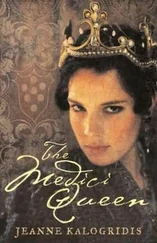The Corpus Evangelicorum itself may have been an interim plan, but it seems that something of its kind was, after all, intended to endure. For more than a year already, Gustav Adolf had been negotiating a betrothal between his five-year-old daughter and her cousin Friedrich Wilhelm, the eldest son of the Elector of Brandenburg. This, the King hoped, would achieve what his own marriage to the Elector’s sister had so far not achieved: unite Swedes and Germans in a new northern bloc, which would shift the whole balance of power in Europe away from the Catholic Habsburg south and towards a new Protestant Swedish-German dynasty.
Honoured and beloved Father,
As I have not the happiness of being with Your Royal Highness, I am sending you my portrait. Please think of me when you look at it, and come back to me soon and send me something pretty in the meantime. I am in good health, thanks be to God, and learn my lessons well. I pray God will send us good news of Your Majesty, and I commend you to his protection.
I remain,
Your Royal Highness,
Your obedient daughter,
Christina. 12
So read the King, seated on a campstool in his tent at Fürth, on the outskirts of Nuremberg. The summer was drawing to a close. For almost three months, his army had been encamped there, while on the ridge above them, the imperial force stood waiting. Wallenstein had followed the King to Nuremberg, and now held him trapped with his weakening army. Though the King’s thoughts may have turned often enough to his little daughter at home, he cannot have had much leisure to think of sending ‘something pretty’ to her, for his supply lines were poor, food and water were scarce, and his men were beset by disease and discouragement. An attempt to fight their way out had ended in disaster; of their cavalry alone, three quarters had been lost. The camp was full of rumours that the King’s allies were turning from him, and among the men, for the first time, his popularity began to fade.
The time had come to offer peace terms, and accordingly, Swedish envoys were sent out to Wallenstein, in their hands the plan for the Corpus Evangelicorum , with plenty to placate the besieger. The Generalissimo chose not to accept it, as he could well afford to do, with Gustav Adolf and his once invincible men penned in beneath the ridge. Without fresh supplies, the Swedes could not survive the cold weather that would soon be upon them, and in mid-September the desperate King decided to attempt a retreat from the camp. If he succeeded, he would march towards Austria, where new rebellions were rumoured to have started against the Habsburg powers.
The retreat began, the Swedes fearing every moment the onslaught of the imperial troops. But Wallenstein did not attack. Instead, he turned his army towards Saxony, to the lands of Gustav Adolf’s half-hearted ally, the Elector Johann Georg. The Swedes themselves turned back to help the Elector, and by mid-October they were once again in Nuremberg, the scene of their own grim defeat only weeks before. Now, passing through the abandoned imperial camp, they found, to their horror, the remnants of Wallenstein’s army, the unburied dead and, worse, the starving wounded, still lying there. The King gave instructions for the occupation of the area before the winter should set in, and moved his army on towards Saxony. They marched via Leipzig, then west some fifteen miles to the little town of Lützen, where, so they had heard, Wallenstein was encamped with a reduced army. There the revitalized Swedes would engage them, sure of victory with their novel fighting tactics and their superior numbers.
But Gustav Adolf’s information was only partially correct. Wallenstein had only just dismissed his 12,000 allied forces. Learning of the Swedish King’s advance, he had sent for them to be recalled. His remaining army alone numbered some 14,000, and they spent the night setting up their cannon and their barricades. In the early hours of the next morning they were still to be seen, making their way by torchlight, digging their trenches and hoisting their defences, while, outside the town, in the fields nearby, the 16,000 Swedish troops lay sleeping.
It was the sixth of November. By eight in the morning, in clear light, the first shots had been fired, while the King still stood before his army, offering prayers for a Protestant victory. Wallenstein had drawn up his army in traditional formation, with infantry in the centre, protected by artillery, and cavalry on the wings, while the Swedes stood ready in the flexible squares which had served them so well at Breitenfeld. It was not until ten that the two armies engaged, and by then the battleground was covered in a thick mist, alternately providing cover and hampering visibility. The Swedes charged first, and the desperate struggle began. 13
Later, those who had fought that day could not agree when the imperial reinforcements had arrived; some thought midday, others thought not until the evening. In fact, the cavalry arrived first, led by the legendary Count Gottfried Pappenheim, hero of the imperial army and idol of his own soldiers. They attacked immediately, beating the Swedes back over the territory they had won. Pappenheim was shot through the lung and retreated from the battle to die, choked with blood, in his coach behind the lines. It was rumoured that Gustav Adolf had also been hit. His horse had been seen, wounded in the neck, plunging wildly across the battlefield. The imperial general Piccolomini, himself grazed seven times by bullets, swore that he had seen him lying on the ground. Duke Bernard of Saxe-Weimar took command of the Swedish force, and by nightfall, the imperial troops had been driven back. Wallenstein retreated to the nearby town of Halle, leaving his men in disarray behind him. The battle had been inconclusive, but the Swedes now occupied the field, and the victory was held to be theirs.
In the darkness, the Swedish soldiers began the terrible search for the body of their King. Beneath a heap of the dead, naked but for his shirt, they found him. He had been killed by a shot through the temple, but his body showed other wounds: a dagger thrust and another shot in his side, two shots in the arm, and a shot in the back.
Rumours spread that the King had been betrayed, killed by his own men under cover of battle. Some recalled the Bloodbath of Linköping, saying that the sons of those beheaded by his father had succeeded in claiming a tardy revenge. 14Others held that his murder had been ordered by Cardinal Richelieu, determined to be rid of the ‘impetuous Visigoth’ who had bettered him at his own political games. It seemed impossible that the great Gustav Adolf could have died like any ordinary soldier, shot and stabbed as he fought his way through enemy lines. Bernard of Saxe-Weimar gave out that the King was not dead, but only wounded, and for days afterwards merchants in London were placing bets that he was still alive. Waiting in Erfurt, Maria Eleonora learned the truth on the tenth of November; she collapsed with grief. The following day, in Frankfurt, Chancellor Oxenstierna heard the news, and passed the first sleepless night of his life.
Gradually it emerged that, leading a cavalry charge early in the battle, the King had been shot in the arm, and had lost control of his horse. In the thick mist covering the battlefield, he had been separated from his escort of cavalrymen. Wounded again, he had fallen from his saddle, but his boot had caught in a stirrup, and he had been dragged along the ground. Falling free, he had been unable to rise, and had been shot in the head where he lay.
His body was carried, on a powder wagon, to the little village of Meuchen near the battlefield, and there it was washed clean of dirt and blood. The King’s reverent soldiers stored the blood itself in the village church, marking the place with his coat of arms. Overnight, the body lay before the altar, and when morning broke, the village schoolmaster, who served as the local joiner as well, set to work to build a wooden coffin. In this the King’s body was carried to the town of Weissenfels, some ten miles distant. There, in the bay-windowed room of a local guesthouse, it was laid out and embalmed by the King’s own apothecary. Among those who saw the body there in its simple coffin was Gustav Gustavsson, the King’s illegitimate son, now sixteen years old, and serving in the Swedish army.
Читать дальше












